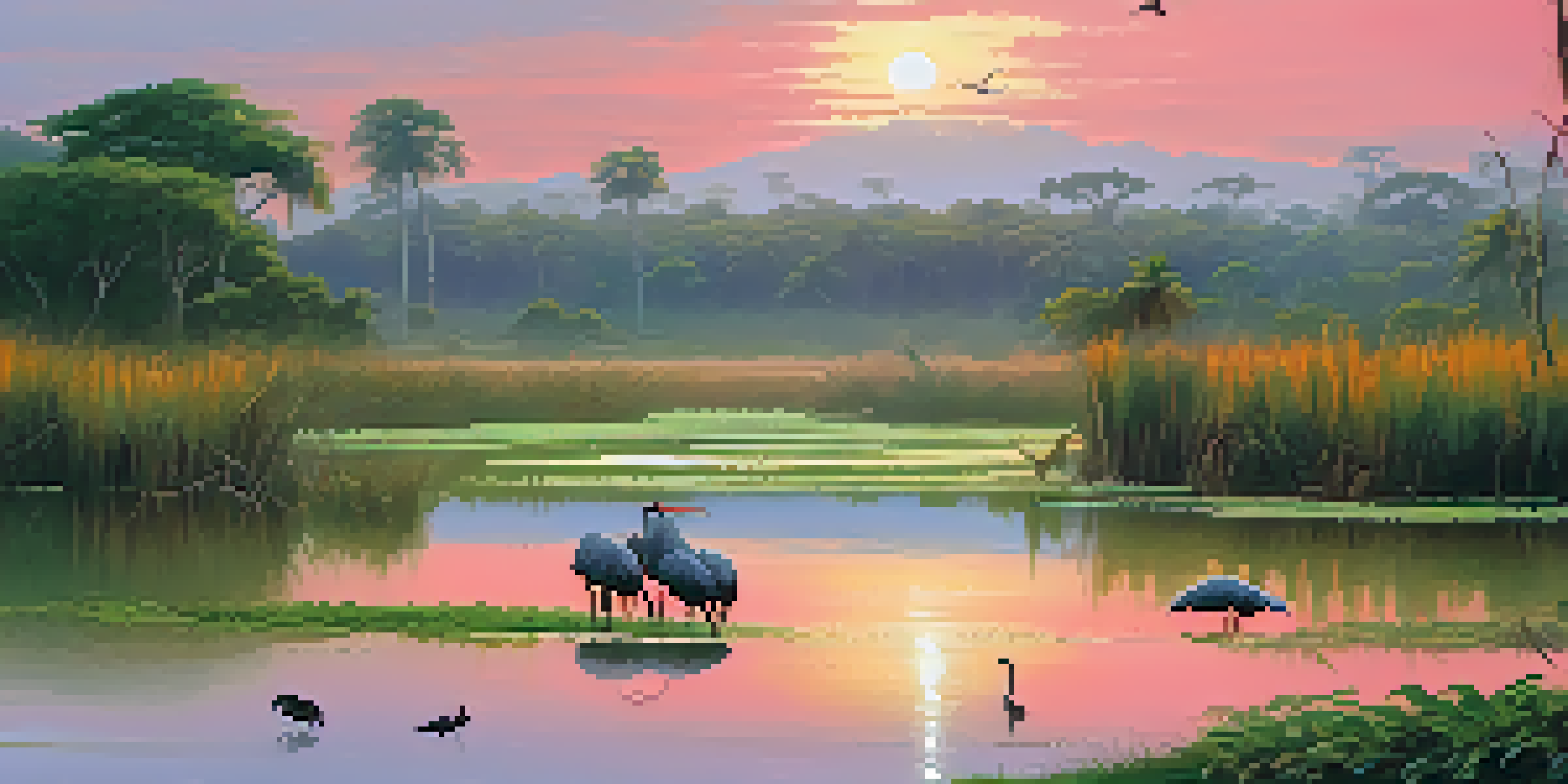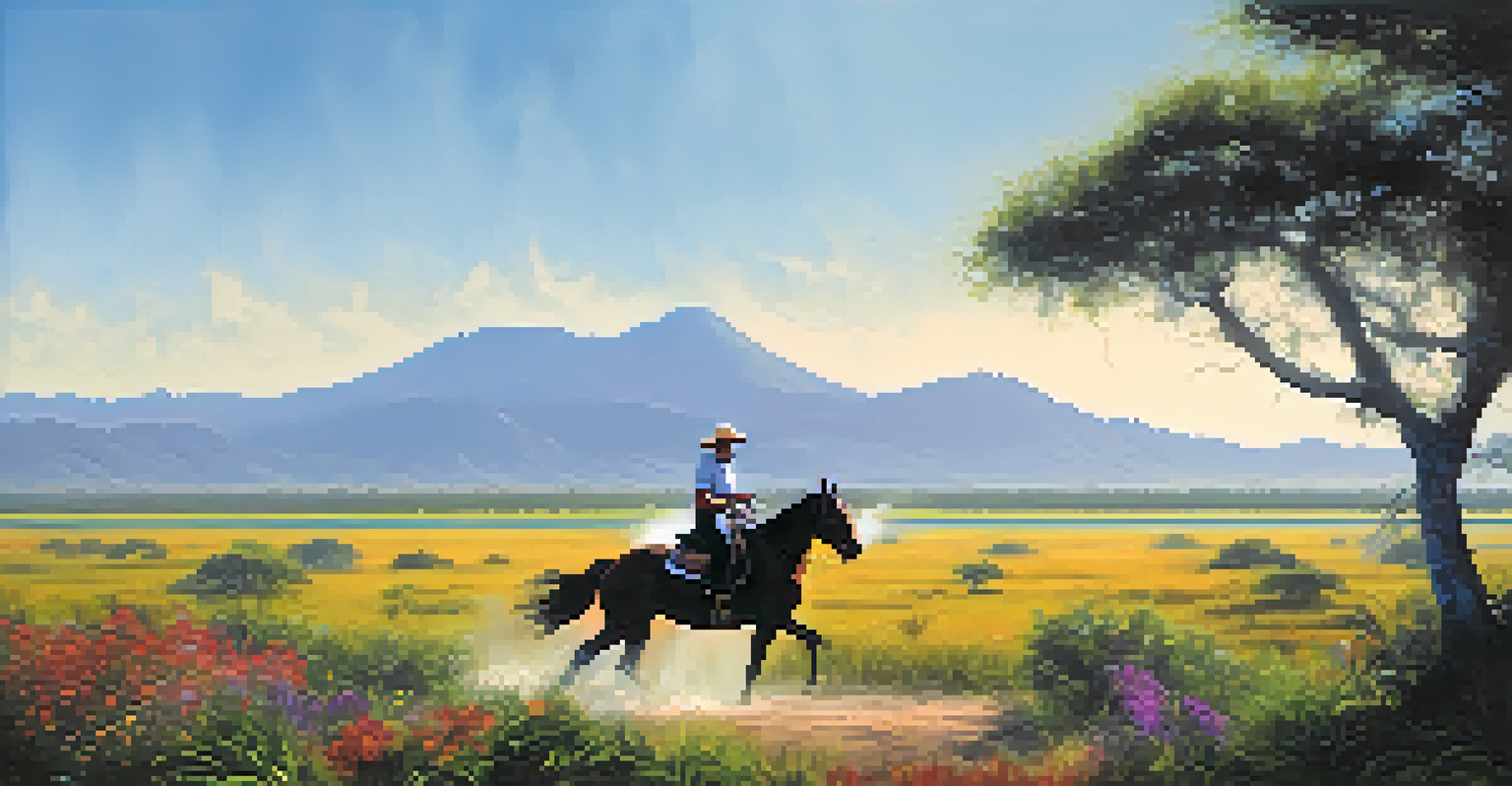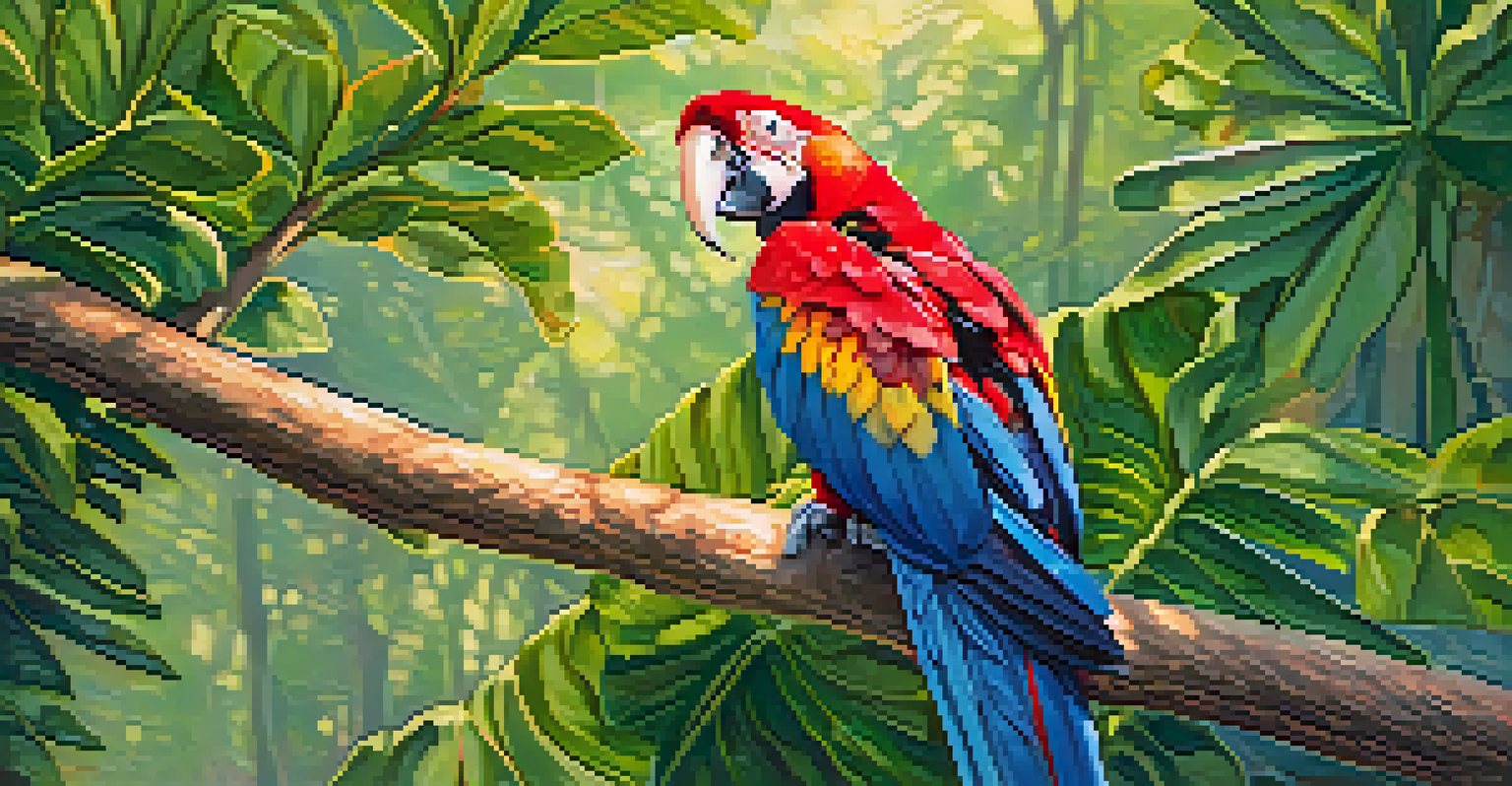Pantanal Wetlands: The Ultimate Ecotourism Experience

What Makes the Pantanal Unique for Ecotourism
The Pantanal Wetlands, sprawling across Brazil, Bolivia, and Paraguay, is the world's largest tropical wetland. Its vast and diverse ecosystem boasts an incredible variety of wildlife, making it a paradise for nature lovers and ecotourism enthusiasts. Unlike other popular destinations, the Pantanal's unique geography, with its seasonal flooding, creates a dynamic environment that attracts numerous species, making every visit a new adventure.
In every walk with nature one receives far more than he seeks.
From capybaras lounging by the water to jaguars stealthily prowling through the underbrush, the Pantanal offers an unparalleled opportunity for wildlife observation. This rich biodiversity is not just fascinating; it’s essential for the health of our planet. By visiting, you contribute to conservation efforts and promote sustainable tourism, ensuring that this incredible region remains preserved for future generations.
Ecotourism in the Pantanal aligns perfectly with the growing trend of responsible travel, where visitors seek to connect with nature while minimizing their impact. It's not just about seeing the sights; it's about understanding and appreciating the delicate balance of this vibrant ecosystem. The Pantanal invites you to be part of its story, where every trip can make a difference.
Best Time to Visit the Pantanal Wetlands
Timing your visit to the Pantanal is crucial for experiencing its wildlife and natural beauty at its best. Generally, the dry season from May to September is considered ideal, as the receding waters concentrate animals around the remaining water sources. This makes wildlife spotting much easier, creating a photographer's dream where every moment is Instagram-worthy.

However, the wet season, from October to April, is equally enchanting, transforming the landscape into a lush paradise. This time of year is perfect for birdwatchers, as migratory species flock to the region, creating a vibrant tapestry of colors and sounds. While the trails may be less accessible, the sheer beauty and tranquility of the flooded wetlands offer a different yet equally rewarding experience.
Unique Ecosystem for Ecotourism
The Pantanal Wetlands offer a diverse habitat, supporting a vast array of wildlife and providing a unique experience for nature enthusiasts.
Ultimately, the best time to visit depends on your interests. Whether you're chasing jaguars or seeking the perfect shot of a scarlet macaw, the Pantanal caters to a wide array of ecotourism adventures year-round. Just remember, each season brings its own unique charm and opportunities for exploration.
Wildlife You Can Expect to See
The Pantanal is home to an astonishing array of wildlife, making it one of the most biodiverse regions on Earth. Spotting giant river otters, caimans, and capybaras is just the beginning; the wetlands are also a sanctuary for over 650 bird species. From the majestic jabiru stork to the vibrant toucans, every corner of the Pantanal teems with life, offering endless opportunities for birdwatching.
The clearest way into the Universe is through a forest wilderness.
One of the highlights of visiting the Pantanal is the chance to see the elusive jaguar in its natural habitat. Known as the 'king of the wetlands,' these magnificent cats are often spotted along riverbanks, especially during the dry season. Guided tours and boat rides increase your chances of encountering these powerful predators, making for an unforgettable experience.
Moreover, the wetlands are a vital breeding ground for many species, including the endangered Brazilian tapir and the Pantanal's unique fish species. Each visit provides a chance to witness the intricate web of life that thrives in this ecosystem, reminding us of the importance of conservation efforts to protect these incredible creatures.
Top Activities to Enjoy in the Pantanal
Adventure awaits in the Pantanal, where ecotourism is not just about observing wildlife but immersing yourself in the environment. Kayaking through the winding waterways offers a unique perspective, allowing you to glide silently past resting caimans and colorful birds. It's a peaceful way to connect with nature while appreciating the beauty of the wetlands up close.
For those seeking a more adrenaline-fueled experience, horseback riding through the plains is a fantastic option. The Pantanal's vast landscapes are best explored on horseback, where you can cover more ground and reach areas inaccessible by foot. Feel the wind in your hair as you trot alongside herds of wild horses and experience the thrill of riding through this breathtaking wilderness.
Best Times for Wildlife Viewing
Visiting during the dry season enhances wildlife spotting, while the wet season attracts migratory birds, catering to different interests year-round.
Additionally, guided night tours provide a whole different world to explore. As the sun sets, the Pantanal comes alive with nocturnal creatures, offering a chance to witness a side of nature many never see. With the right guide, you can safely navigate the darkness while marveling at the sounds and sights of the night, making for an unforgettable adventure.
How to Get to the Pantanal Wetlands
Reaching the Pantanal Wetlands can be an adventure in itself, adding to the allure of this remote destination. Most travelers begin their journey in Brazil, flying into major cities like Campo Grande or Cuiabá. From there, various transportation options, including buses and rental cars, can take you deeper into the region, where the real magic happens.
Once you're in the Pantanal, many lodges and eco-friendly accommodations offer their own transfer services, often including guided tours as part of the package. Opting for these services not only simplifies your travel but enriches your experience with expert local knowledge. Plus, it’s a fantastic way to meet other travelers and share stories as you embark on this journey together.
For the adventurous at heart, some choose to arrive by boat, navigating the waterways that define the Pantanal. This unique approach allows for breathtaking views and opportunities to spot wildlife along the way. Regardless of how you get there, the journey is just the beginning of your unforgettable ecotourism experience in the Pantanal.
Essential Packing Tips for Your Pantanal Adventure
Packing for the Pantanal requires a bit of thought to ensure you’re prepared for its unique conditions. Lightweight, breathable clothing is a must, as temperatures can soar during the day. Opt for long-sleeved shirts and pants to protect yourself from the sun and pesky insects, especially if you're venturing into the jungle or on night tours.
Don't forget to bring sturdy footwear; comfortable hiking boots or waterproof shoes will serve you well as you explore various terrains. A good pair of binoculars is also essential for wildlife watching, allowing you to spot animals from a distance without disturbing them. And of course, a high-quality camera to capture the stunning landscapes and incredible wildlife should be at the top of your list.
Pack Smart for Adventure
Preparing with lightweight clothing, sturdy footwear, and essential gear ensures a comfortable and enjoyable experience in the Pantanal.
Lastly, remember to pack essential items like sunscreen, a reusable water bottle, and insect repellent. Staying hydrated and protected from the sun will ensure you can enjoy every moment of your Pantanal experience without discomfort. With the right gear, you'll be well-prepared to embrace the adventure that awaits in this remarkable ecosystem.
Responsible Ecotourism Practices in the Pantanal
As a visitor to the Pantanal, practicing responsible ecotourism is crucial for preserving this delicate ecosystem. Always choose eco-friendly accommodations and tour operators that prioritize sustainability and wildlife conservation. By supporting businesses that respect the environment, you play a vital role in protecting the Pantanal for future generations.
Additionally, minimize your impact by following the Leave No Trace principles. This includes sticking to established paths, avoiding disturbing wildlife, and properly disposing of waste. Remember, the goal is to appreciate the beauty of the Pantanal without altering its natural state. Being a mindful traveler enhances your experience and ensures that others can enjoy the same wonders.

Lastly, consider participating in local conservation programs or volunteering during your stay. Many organizations offer opportunities to engage directly with conservation efforts, allowing you to give back to the region while gaining a deeper understanding of its ecological challenges. By becoming an active participant in your adventure, you not only enrich your experience but also contribute positively to the Pantanal's future.